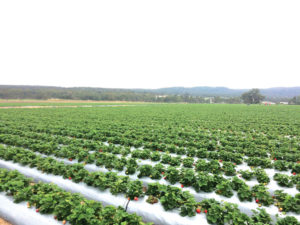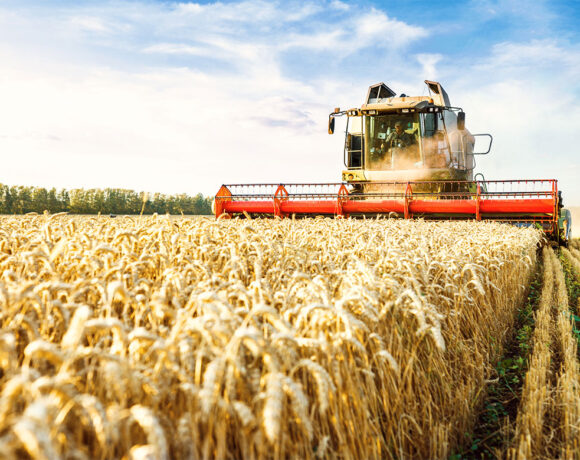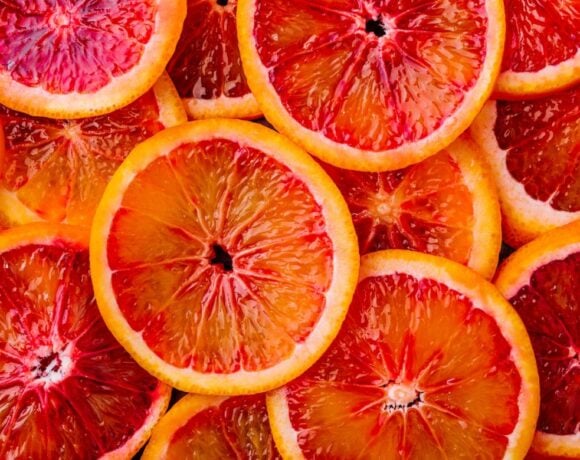By harvesting strawberries in Stanthorpe and the Sunshine Coast, the team at Ashbern Farms supplies strawberries year round. We spoke to Ashleigh Hoyle about life on the properties, the varieties growing there, and how the needle sabotage has affected production.
How did you get into strawberry farming?
Ashbern Farms is owned and run by Jon and Bernadine Carmichael, and Brendon Hoyle and me, Ashleigh Hoyle. Brendon was a farm manager for Jon and Bernadine Carmichael for eight years before we formed Ashbern Farms with them. We had moved from a cattle station in the bush to be closer to family. Jon’s family has been growing strawberries for nearly 40 years.
What conditions do strawberries need to grow?
Ideal winter strawberry growing conditions are sunny 25-degree days and cool nights.
How are your two farms different?
We grow different varieties for the different seasons. Winter “short-day” strawberries and summer “day-neutral” strawberries. The winter strawberries are generally slower growing and can take four to five weeks from flower to strawberry while the summer strawberries grow faster and only take three weeks.
What kind of strawberries do you grow?
Albion in Stanthorpe, as well as some new varieties we’re trialling. Red Rhapsody, Suncoast Delight, Aussie Gem, Scarlet Rose and Petaluma on the Sunshine Coast.
When are strawberries ready for harvest?
Stanthorpe harvest is October to May and the Sunshine Coast harvest is May to November. Strawberries are ready for harvest when they’re full colour.
What does harvesting involve?
We have picking teams on small trolleys who move down the rows picking the ripe strawberries into green stackable trays. They segregate rubbish and good fruit while picking. At the end of their row their trays are weighed and transported as quickly as possible to the cold rooms.
What does a day on the farm involve?
The pickers start between 5am and 6am. The farm is picked over a period of three days, each day accounting for a third of the crop. The picked fruit is transported quickly to the farm cold rooms where they are rapidly cooled to 4 degrees. The cold fruit is then transported to the packing shed where it is packed for orders and then shipped that evening to supermarkets, central produce markets and wholesalers.
What don’t people know about strawberries?
Strawberries need to be treated like milk to stay at their best, but are tastiest at room temperature, or fresh off the plant warmed by the sun! Strawberries have more vitamin C than oranges.
How has the recent strawberry sabotage affected you?
The recent sabotage affected demand considerably, which meant we had to spray out 50 per cent of our production blocks. Thanks to the huge amount of support from the public, we are able to continue picking and packing.
What has been the most surprising thing to come out of the sabotage?
The support from customers who went out of their way to buy strawberries when we needed the support. We would like to thank all our customers. We were overwhelmed with the response.
Has the sabotage changed the way you operate?
We are definitely more aware of possible contamination risks and have purchased a metal detector to ensure we give our customers the best possible fruit we can.
Where can bakers and pastry chefs get your strawberries?
Gibb Bros in Brisbane Markets, Suncoast Fresh, Brisbane and Sunshine Coast, Ripeway on the Sunshine Coast, Stuart Dickson Produce in Sydney Markets, Courtman & Newton in Newcastle markets, Dykes Bros in Melbourne Markets, AF Parker and Sons in Adelaide markets, and The Produce Wholesaler.









COMMENTS